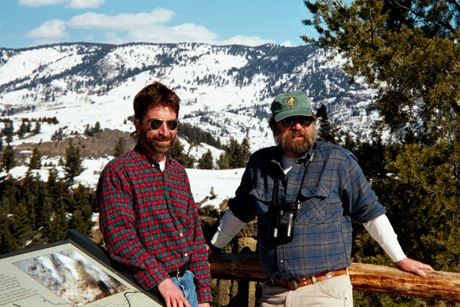My bedtime reading has recently included the
Race to Save the World’s Rarest Bird: The Discovery and Death of the Po’ouli by Alvin Powell [Mechanicsburg, PA : Stackpole Books, c2008, viii, 280 p. : map ; 22 cm., Includes bibliographical references and index]. This is a fascinating story of work with an endangered species in some of the worst habitat in the U.S.A. Fascinating and depressing: if the subtitle did not give it away, the book opens with death of a captive Po’ouli. The Po’ouli was unknown to science and apparently natives of Hawai’i until its discovery in July 1973 in the state of Hawai’i’s Hana Forest Reserve on Maui. When initially discovered it was not clear to what family this species belonged. Eventually it was found that his species was one of Hawai’i’s honeycreepers, albeit a species very distantly related to the others.
One would not think that Maui’s with its resorts and beaches could be so miserable, but this is truly one of the most inhospitable places imaginable. This is rainforest so impenetrable that machetes are needed to hack trails, so rainy that researchers are often confined to camp and unable to see anything because of the rain and so cold that researchers caught out of camp needed to huddle together for warmth. At it rained so hard that looking for birds was impossible, confining researchers to tents except for redigging trenches around tent and to take care of things that one did not want to do in your tent.
After its discovery initial estimates of the Po’ouli’s population was estimated in the low hundreds, and it was added to the endangered within two years of its discovery. Feral pigs, goats, rats and Rosy Wolf Snails took a toll. Wolf Snails are introduced predatory snails that eat native snails. One diet items of the Po’ouli are snails. It was clear that the population was crashing. The fact that Po’ouli’s do not sing and their only call is a nondescript chip that sounds like other species made population estimates difficult, especially when coupled with the topography and climate.
The Hawaiian Forest Bird Survey ran from 1976-83 and attempted to identify the distribution and population size of all forest birds on five islands. Population was ca 140, down 80-99% from initial estimates. Pig activity was increasing dramatically. A variety of strategies were thought about: Fencing and removal of feral pigs, establishment of a second population, captive breeding, among others. Fencing was tried first, but the steep, gullied nature of the landscape made it very difficult and hideously expensive. By the time bureaucratic arguments over what permits were needed from what agency were settled it was 1986. Still the population fell. The next survey suggested a population of six [two pair and 2 single birds]. By the time the next year past, both pairs had lost their mates and one single bird disappeared. At this point thoughts turned to relocation. Since the remaining three birds’ territories did not over lap, they would never meet and mate on their own. Captive breeding was viewed as the last resort. Captive breeding has had it successes, but much was unknown about this species and honeycreepers are difficult to breed. Precious little was known about Po’oulis, only one or two nests were ever found and I think only once was an adult observed feeding young. So was decided to relocate individuals from one territory to another in hopes that the birds would meet naturally and breed. One problem with relocation is that many vertebrates are very faithful to their home ranges. Permit issues delayed the start of relocations. Not surprisingly, relocations met with failure as relocated birds returned to their home ranges. Captive breeding was going to be tried. Again permit issues slowed things down. One bird was captured and brought into a place where it was hoped to start captive breeding. The bird sickened, lost weight and died on November 26, 2004. I do not believe a living Po’ouli was seen again. Upon necropsy, this bird appeared to be extremely old.
The book ends on a rather optimistic note, certain that we are better off today than we were 30 years ago to preserve a rare species. People should have learned from the problems and clearly everyone realized that efforts should have started far earlier. Yet I open the November 11 issue of Nature and see ‘Feathers Fly over Hawaiian Bird’, a news/commentary item by Rex Dalton [Nature Vol 456: 682-683]. In this Dalton describes infighting between ornithologists from the University of Hawai’i at Manoa and refuge staff for the Hakalau Forest National Wildlife Refuge on the island of Hawai’i. The ornithologists believe that the ’akepa [yet another threatened Hawaiian Honeycreeper] is undergoing a population crash and suggest that competition with the invasive Japanese White-eye over food is a major factor. Refuge officials believe there is no decline. In published papers Leonard Freed suggests that poor nutrition makes the ’akepa prone to parasites. He suggests that there are only 4000 ’akepa on the refuge and over 20000 Japanese White-eyes. The refuge’s wildlife biologist admits to not even reading the paper.
Will we ever learn?NotesA picture and recording of the Po’ouli can be found at
Po’ouli Image and sound recordingand more information at
Po’ouli Facts/A film of the ’Akepa is at
’Akepa Filmmore information is at
’Akepa Factsheet

